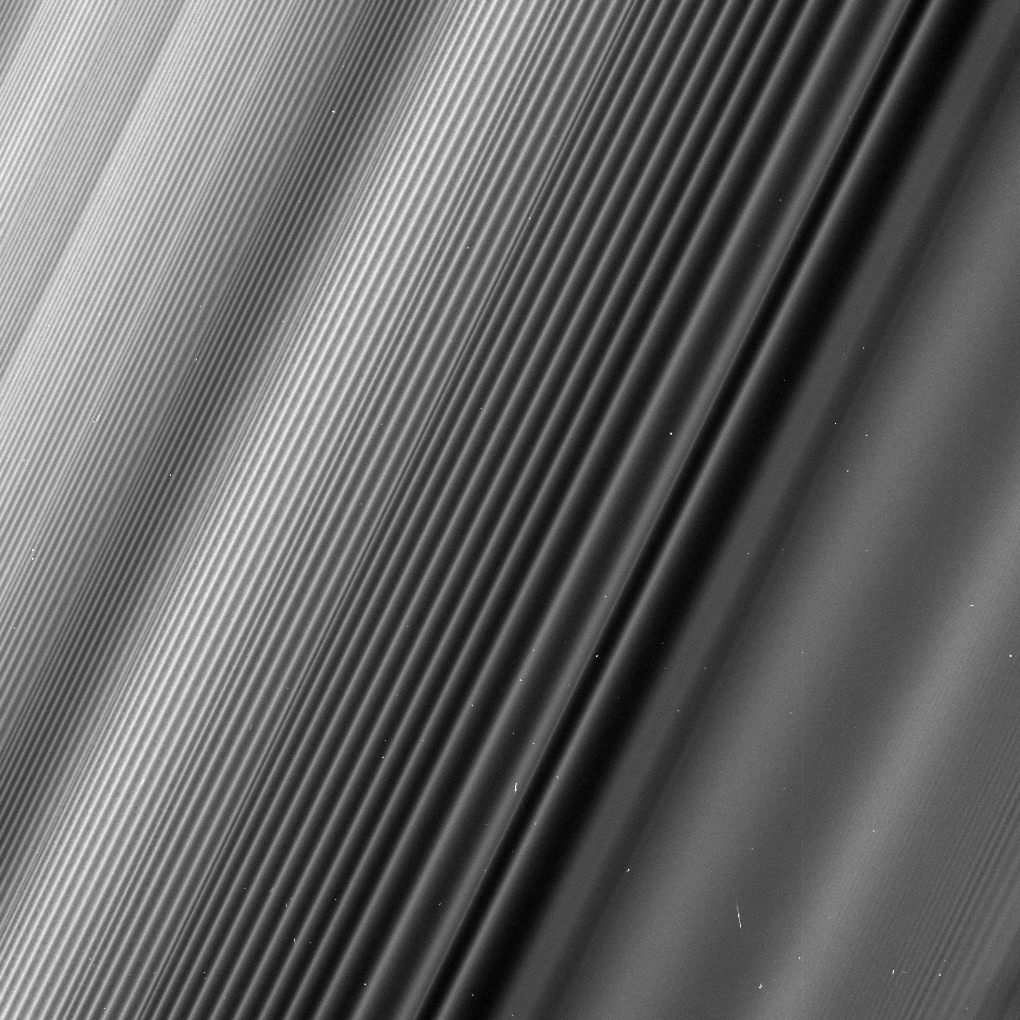 Le increscapture sugli anelli di Saturno prodotte dal satellite Giano
Le increscapture sugli anelli di Saturno prodotte dal satellite Giano
L'anello B di Saturno fotografato dalla sonda Cassini. Le increspature sono dovute all'orbita del satellite Giano.
The radius from Saturn at which the wave originates (toward lower-right in this image) is 59,796 miles (96,233 kilometers) from the planet. At this location, ring particles orbit Saturn twice for every time the moon Janus orbits once, creating an orbital resonance. The wave propagates outward from the resonance (and away from Saturn), toward upper-left in this view. For reasons researchers do not entirely understand, damping of waves by larger ring structures is very weak at this location, so this wave is seen ringing for hundreds of bright wave crests, unlike density waves in Saturn's A ring.
The image gives the illusion that the ring plane is tilted away from the camera toward upper-left, but this is not the case. Because of the mechanics of how this kind of wave propagates, the wavelength decreases with distance from the resonance. Thus, the upper-left of the image is just as close to the camera as the lower-right, while the wavelength of the density wave is simply shorter.
This wave is remarkable because Janus, the moon that generates it, is in a strange orbital configuration. Janus and Epimetheus [...] share practically the same orbit and trade places every four years. Every time one of those orbit swaps takes place, the ring at this location responds, spawning a new crest in the wave. The distance between any pair of crests corresponds to four years' worth of the wave propagating downstream from the resonance, which means the wave seen here encodes many decades' worth of the orbital history of Janus and Epimetheus. According to this interpretation, the part of the wave at the very upper-left of this image corresponds to the positions of Janus and Epimetheus around the time of the Voyager flybys in 1980 and 1981, which is the time at which Janus and Epimetheus were first proven to be two distinct objects (they were first observed in 1966).
System Sounds ha convertito le increspature prodotte sull'anello B di Saturno dai passaggi di Giano e del suo compagno co-orbitale Epimeteo in onde sonore.
Many of Saturn's moons launch spiral density waves within the rings at the locations of resonances. These are the places where the motions of particles that make up the rings harmonize with the motion of a moon, with both of them executing different numbers of complete orbits in the same time. For example, particles at a 2:1 resonance complete 2 orbits for every 1 orbit of a certain moon. We converted the waves of all the '1st order' resonances of the sister moons Janus and Epimetheus into sound. These moons share an orbit but swap places every four years and this dance can be clearly seen and heard here. Density waves caused by resonances with other moons as well as wakes caused by Saturn's 'ravioli' moon Pan which orbits within the rings are also present.
LEGGI ALTRO...